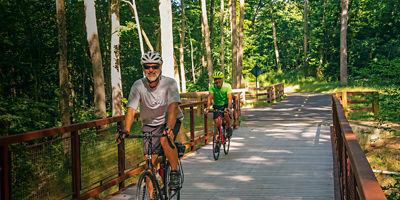
Training for endurance is your best bet for faster, longer, and more comfortable rides. That improvement takes commitment, a plan, and follow-through. But with the right plan and hard work, you'll see results, breathe easier, feel stronger, and recover faster. Here's how you can increase endurance on your bicycle.
Create a Plan and Stick to It
Consistency is the key to success. Working out, tracking your progress, and staying on course will help elevate occasional exercise to a serious training plan. Listen to your body, though, and avoid the common mistake of overtraining. If your knee hurts, you feel unusual discomfort or serious general pain, adjust your workout to accommodate. Nothing in your control will throw off your training quite like an overuse injury.
Start With Your Cardio
One of the most effective ways to improve your endurance is training your cardiovascular system. Exercising your heart and lungs will make your riding more efficient, allowing you to work harder for longer. Here’s a recap of the cardio-training basics:
Build a Base With Low-Intensity Rides
First off, increase the amount of time you spend on your saddle. If you're used to 45-minute rides, do 1 hour, 15 minute; if you're used to 90 minutes, do 2 hours. Work to keep your heart rate consistent throughout this ride at about 70% of maximum. Do these longer, low-intensity rides about two times per week. These rides do not need to be super fast, or up the steepest hill; the important takeaway is simply spending more time, and miles, on your bike.
Interval Training
This involves periods of high-intensity effort surrounded by rest periods over the course of a single ride. These high-intensity periods can range anywhere from 30 seconds to 5 minutes. Ride at about 90% of your maximum heart rate for the interval, then pedal easy in the rest periods to allow recovery. For example, over the course of a 30-minute ride, do five 1-minute intervals followed by 5 minutes of rest. As you get stronger, increase the number (and length) of intervals on your ride, and decrease the amount of rest between intervals. Do these high-effort exercises about two to three times per week, but not on back-to-back days.























